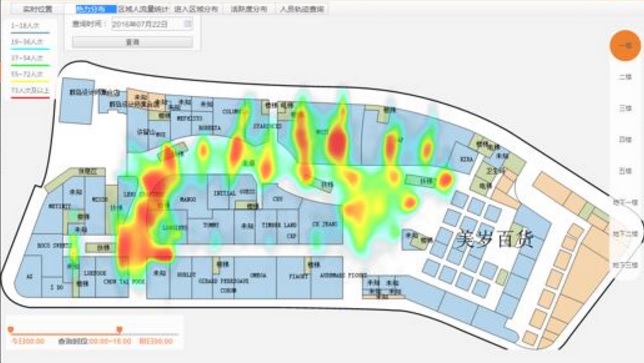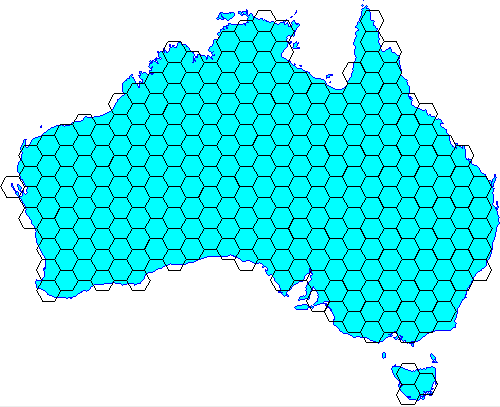Label
PostgreSQL, recursive queries, big screen broadcasts, the most congested gateways, the busiest shops, the most congested toilets in an area, data perspective, streaming, time series data
background
With the development of the Internet of Things, the generation of data is faster and faster.For example, data of car passing through roads, data of user's residence, data of water mark sensor, FEED data of e-commerce, track data of online car appointment, etc.
So much data can be used for different purposes, including real-time streaming statistics, time series processing of related needs, and full analysis requirements.
These all have solutions.
Stream Computing Comes Back - PostgreSQL Strongs IoT with PipelineDB
What are the features of a time series database? Introduction to TimescaleDB time series database
Take the large screen of the command center for example, there are some requirements that are interesting, such as
1. Display the latest sensor TOP VALUE data.
2. Select a timeline to show people flow by area.
Example
1 Output the latest values reported by all sensors
This need is very similar to the one I wrote earlier.
Designs a table structure where gid represents the sensor ID, val is the uploaded value, and crt_time is the time.
Suppose you have 10,000 sensors and 10 million records inserted.
create unlogged table sort_test( id serial8 primary key, -- Self-adding Primary Key s_id int, -- sensor ID val numeric(10,2), -- Sensor Value crt_time timestamp default clock_timestamp() -- Report time );
Write 10 million sensor test data
postgres=# insert into sort_test (s_id,val) select random()*10000, random()*100 from generate_series(1,10000000); INSERT 0 10000000
Create Index
postgres=# create index idx_test on sort_test using btree(s_id,id desc);
Recursive calls are used to get the latest values for all sensors (marked by the maximum self-increasing ID for each sensor)
create type r as (s_id int, val numeric(10,2)); -- Composite type with recursive skip as ( ( select (s_id,val)::r as r from sort_test where id in (select id from sort_test where s_id is not null order by s_id,id desc limit 1) ) union all ( select ( select (s_id,val)::r as r from sort_test where id in (select id from sort_test t where t.s_id>(s.r).s_id and t.s_id is not null order by s_id,id desc limit 1) ) from skip s where (s.r).s_id is not null ) -- There where (s.r).s_id is not null Be sure to add, Otherwise, the cycle would be dead. ) select (t.r).s_id, (t.r).val from skip t where t.* is not null;
Ten million records, screening 10,000 latest records, took time: 129 milliseconds.
Why so fast?Because recursion is used, the amount of scanning and computation is reduced.
s_id | val -------+------- 0 | 83.55 1 | 91.62 2 | 72.70 3 | 45.46 4 | 99.97 5 | 17.04 6 | 8.96 7 | 25.83 8 | 28.10 9 | 26.19 10 | 83.03 11 | 1.30 ...... Time: 128.779 ms
Cursors are faster, taking 10 at a time and only 0.36 milliseconds.
postgres=# begin; BEGIN Time: 0.095 ms postgres=# declare cur cursor for with recursive skip as ( ( select (s_id,val)::r as r from sort_test where id in (select id from sort_test where s_id is not null order by s_id,id desc limit 1) ) union all ( select ( select (s_id,val)::r as r from sort_test where id in (select id from sort_test t where t.s_id>(s.r).s_id and t.s_id is not null order by s_id,id desc limit 1) ) from skip s where (s.r).s_id is not null ) -- There where (s.r).s_id is not null Be sure to add, Otherwise, the cycle would be dead. ) select (t.r).s_id, (t.r).val from skip t where t.* is not null; DECLARE CURSOR Time: 0.841 ms postgres=# fetch 10 from cur; s_id | val ------+------- 0 | 83.55 1 | 91.62 2 | 72.70 3 | 45.46 4 | 99.97 5 | 17.04 6 | 8.96 7 | 25.83 8 | 28.10 9 | 26.19 (10 rows) Time: 0.364 ms
2 Output traffic TOP 10 intersection of a city
Compared with the first example, a convergence is made, sorted by VALUE, with the largest output.
Suppose there is a sensor at each intersection that constantly reports the amount of traffic that passes through the intersection.The large screen shows the 10 most traveled intersections.
For testing convenience, I'm still using the data from the first example, with the last one added.
postgres=# with recursive skip as ( ( select (s_id,val)::r as r from sort_test where id in (select id from sort_test where s_id is not null order by s_id,id desc limit 1) ) union all ( select ( select (s_id,val)::r as r from sort_test where id in (select id from sort_test t where t.s_id>(s.r).s_id and t.s_id is not null order by s_id,id desc limit 1) ) from skip s where (s.r).s_id is not null ) -- There where (s.r).s_id is not null Be sure to add, Otherwise, the cycle would be dead. ) select (t.r).s_id, (t.r).val from skip t where t.* is not null order by 2 desc limit 10; s_id | val ------+------- 997 | 99.99 2233 | 99.97 610 | 99.97 4 | 99.97 6735 | 99.96 545 | 99.93 2992 | 99.91 4747 | 99.90 543 | 99.89 7229 | 99.88 (10 rows) Time: 126.052 ms
10 million records, 10,000 latest records filtered, output TOP 10, time-consuming: 126 milliseconds.
3A certain area, a certain period of time, button traffic output TOP shop
There are two more dimensions than the first two examples:
One is the time dimension, in which users can check a time period for analysis.Another is the region dimension, in which the user selects the region and outputs the data within the region.
Reflection:
Unlike the B-TREE index, which is stored orderly, the spatial index is a GIST index and uses a structure similar to clustering partitions. Therefore, when multicolumn composite is performed, the first output of the spatial query of the GIST combined with index sorting is not feasible and will introduce the SORT displayed.
Principle reference
Also, query criteria include time intervals as criteria, and it is not possible to sort indexed non-driven columns (subsegment gid+VAL).
When can I use Query + Sort of Composite Index?
Implicit sorting can only be used if all the columns preceding the sorted column are equal queries, and the order of indexes should be the same as the order of sorting.For example, index(a,b,c) supports where a=? and b=? order by c, but not where a>? And b=? Order by c, and so on.
Re-plan test data so that for testing convenience, point replaces latitude and longitude, and geometry types can be used for real business.
create table test ( id serial8 primary key, -- Auto-increasing sequence gid int, -- shops ID val int, -- Shop Flow pos point, -- Shop location, For ease of testing, with point Substitute latitude and longitude crt_time timestamp -- Upload Time );
Insert 10 million test data, 10,000 store ID s, 100 million random point s in the dot matrix range.
postgres=# insert into test (gid,val,pos,crt_time) select random()*10000, random()*100000, point(random()*10000, random()*10000), clock_timestamp() from generate_series(1,10000000); postgres=# select min(crt_time),max(crt_time) from test; min | max ----------------------------+---------------------------- 2017-04-13 20:04:18.969268 | 2017-04-13 20:04:54.578339 (1 row)
How can fast sensor maximum filtering for time + space be accelerated?
Optimize in two cases
1. Total sensors (stores) are small (e.g. 10,000 stores)
Use the index to quickly search the maximum VAL of each GID, use partial index to avoid time problems, and use CPU to complete point and surface judgment.
Example,
For example, we allow users to check a minimum time range of 2 hours, and we can create a partial index every 2 hours.(Using so many partial indexes is perverted and not elegant.It is recommended that the partition table of 10.0 be optimized to cut one partition every 2 hours.)
create index idx_test_1 on test (gid, val desc) where crt_time between '2017-04-13 20:04:18.969268' and '2017-04-13 20:04:30.969268';
The total amount of data in this interval is about 3.5 million.
postgres=# select count(*) from test where crt_time between '2017-04-13 20:04:18.969268' and '2017-04-13 20:04:30.969268'; count --------- 3461005 (1 row)
Use this partial index, along with recursive calls, to take out the maximum value of all stores in the area.Then, based on the point and surface judgment, the data of an area is obtained, and the output TOP 10 is sorted.
with recursive skip as ( ( select t0 from test t0 where id in (select id from test where gid is not null and crt_time between '2017-04-13 20:04:18.969268' and '2017-04-13 20:04:30.969268' order by gid,val desc limit 1) -- Time parameter, take out minimum GID Maximum val. As Startup Record ) union all ( select ( select t1 from test t1 where id in (select id from test t where t.gid > (s.t0).gid and t.gid is not null and crt_time between '2017-04-13 20:04:18.969268' and '2017-04-13 20:04:30.969268' -- Time parameters order by gid,val desc limit 1) ) from skip s where (s.t0).gid is not null ) -- There where (s.t0).gid is not null Be sure to add, Otherwise, the cycle would be dead. ) select (t.t0).* from skip t where t.* is not null and circle '((5000,5000), 1000)' @> (t.t0).pos -- Area parameters order by (t.t0).val desc limit 10; -- Remove top ten stores
135 ms return
id | gid | val | pos | crt_time ---------+------+-------+-------------------------------------+---------------------------- 1754353 | 4001 | 99997 | (4755.64117543399,5253.53815406561) | 2017-04-13 20:04:24.563999 600729 | 5874 | 99996 | (5507.96090625226,4394.04523000121) | 2017-04-13 20:04:20.851141 1137330 | 4248 | 99995 | (4332.14340358973,4383.84034205228) | 2017-04-13 20:04:22.575639 2609044 | 7209 | 99995 | (5809.22217573971,4967.18854177743) | 2017-04-13 20:04:27.328745 1330926 | 2834 | 99994 | (4153.9505450055,4986.64934188128) | 2017-04-13 20:04:23.197925 208578 | 3439 | 99994 | (4186.14753056318,5103.39797474444) | 2017-04-13 20:04:19.598547 703010 | 5736 | 99993 | (4913.89285307378,4628.21466382593) | 2017-04-13 20:04:21.178653 298380 | 7680 | 99992 | (4539.91844784468,4454.29485291243) | 2017-04-13 20:04:19.884725 996318 | 7658 | 99992 | (4462.14715018868,5504.16304729879) | 2017-04-13 20:04:22.122626 3120169 | 3261 | 99991 | (4814.33014851063,4505.81138487905) | 2017-04-13 20:04:28.98197 (10 rows) Time: 135.480 ms
The execution plan is as follows
------------------------------------------------------------------------------------------------------------------------------------------------------------------------------------ Limit (cost=937.82..937.83 rows=1 width=40) (actual time=147.241..147.243 rows=10 loops=1) Output: ((t.t0).id), ((t.t0).gid), ((t.t0).val), ((t.t0).pos), ((t.t0).crt_time) Buffers: shared hit=80066 CTE skip -> Recursive Union (cost=1.00..935.54 rows=101 width=64) (actual time=0.037..141.284 rows=10002 loops=1) Buffers: shared hit=80066 -> Nested Loop (cost=1.00..9.03 rows=1 width=64) (actual time=0.036..0.036 rows=1 loops=1) Output: t0.* Inner Unique: true Buffers: shared hit=8 -> HashAggregate (cost=0.57..0.58 rows=1 width=8) (actual time=0.022..0.023 rows=1 loops=1) Output: test.id Group Key: test.id Buffers: shared hit=4 -> Limit (cost=0.43..0.55 rows=1 width=16) (actual time=0.017..0.018 rows=1 loops=1) Output: test.id, test.gid, test.val Buffers: shared hit=4 -> Index Scan using idx_test_1 on public.test (cost=0.43..431864.13 rows=3461209 width=16) (actual time=0.017..0.017 rows=1 loops=1) Output: test.id, test.gid, test.val Index Cond: (test.gid IS NOT NULL) Buffers: shared hit=4 -> Index Scan using test_pkey on public.test t0 (cost=0.43..8.45 rows=1 width=72) (actual time=0.012..0.012 rows=1 loops=1) Output: t0.*, t0.id Index Cond: (t0.id = test.id) Buffers: shared hit=4 -> WorkTable Scan on skip s (cost=0.00..92.45 rows=10 width=32) (actual time=0.014..0.014 rows=1 loops=10002) Output: (SubPlan 1) Filter: ((s.t0).gid IS NOT NULL) Rows Removed by Filter: 0 Buffers: shared hit=80058 SubPlan 1 -> Nested Loop (cost=1.20..9.22 rows=1 width=64) (actual time=0.013..0.013 rows=1 loops=10001) Output: t1.* Inner Unique: true Buffers: shared hit=80058 -> HashAggregate (cost=0.76..0.77 rows=1 width=8) (actual time=0.009..0.009 rows=1 loops=10001) Output: t_1.id Group Key: t_1.id Buffers: shared hit=40033 -> Limit (cost=0.43..0.75 rows=1 width=16) (actual time=0.008..0.008 rows=1 loops=10001) Output: t_1.id, t_1.gid, t_1.val Buffers: shared hit=40033 -> Index Scan using idx_test_1 on public.test t_1 (cost=0.43..369056.35 rows=1153736 width=16) (actual time=0.008..0.008 rows=1 loops=10001) Output: t_1.id, t_1.gid, t_1.val Index Cond: ((t_1.gid > (s.t0).gid) AND (t_1.gid IS NOT NULL)) Buffers: shared hit=40033 -> Index Scan using test_pkey on public.test t1 (cost=0.43..8.45 rows=1 width=72) (actual time=0.003..0.003 rows=1 loops=10000) Output: t1.*, t1.id Index Cond: (t1.id = t_1.id) Buffers: shared hit=40025 -> Sort (cost=2.28..2.29 rows=1 width=40) (actual time=147.240..147.241 rows=10 loops=1) Output: ((t.t0).id), ((t.t0).gid), ((t.t0).val), ((t.t0).pos), ((t.t0).crt_time) Sort Key: ((t.t0).val) DESC Sort Method: top-N heapsort Memory: 26kB Buffers: shared hit=80066 -> CTE Scan on skip t (cost=0.00..2.27 rows=1 width=40) (actual time=0.252..147.138 rows=317 loops=1) Output: (t.t0).id, (t.t0).gid, (t.t0).val, (t.t0).pos, (t.t0).crt_time Filter: ((t.* IS NOT NULL) AND ('<(5000,5000),1000>'::circle @> (t.t0).pos)) Rows Removed by Filter: 9685 Buffers: shared hit=80066 Planning time: 0.508 ms Execution time: 147.505 ms (62 rows)
2. There are many stores, but when time + space converges, the number of records is small (like millions)
In this case, consider using a time partition table.Then build the spatial index.
Locate the specified partition by time condition, filter the data by spatial index.For the filtered data, TOP stores are calculated with a small amount of CPU.
Example
2.1 Partition tables by time (for example, every 2 hours, as explained earlier)
Slightly, I'm going to assume about 10 million data every two hours.
2.2 Creating a spatial index
postgres=# create index idx_test_gist on test using gist(pos); CREATE INDEX
2.3 Perspective
When entering time conditions in SQL, PostgreSQL automatically locks into partitioned tables, and I'm writing the TEST table directly for ease.
Use window query to get TOP SQL
select * from ( select row_number() over(partition by gid order by val desc) as rn, * from test where circle '((5000,5000), 1000)' @> pos -- Area parameters ) t where rn = 1 -- Remove the maximum value for each store in the area order by val desc limit 10; -- Remove top ten stores
efficiency
rn | id | gid | val | pos | crt_time ----+---------+------+-------+-------------------------------------+---------------------------- 1 | 7859807 | 2311 | 99999 | (4900.04640072584,4950.79724118114) | 2017-04-13 20:04:46.013424 1 | 4658616 | 3699 | 99999 | (5625.03716442734,5338.90711143613) | 2017-04-13 20:04:35.467025 1 | 1754353 | 4001 | 99997 | (4755.64117543399,5253.53815406561) | 2017-04-13 20:04:24.563999 1 | 6076598 | 4610 | 99997 | (5679.03681658208,4793.08029171079) | 2017-04-13 20:04:40.09587 1 | 6139261 | 4069 | 99997 | (5225.87833926082,4101.83480009437) | 2017-04-13 20:04:40.301817 1 | 600729 | 5874 | 99996 | (5507.96090625226,4394.04523000121) | 2017-04-13 20:04:20.851141 1 | 4281282 | 9720 | 99996 | (5036.95292398334,4731.64941649884) | 2017-04-13 20:04:34.237957 1 | 5579952 | 1503 | 99996 | (4271.09604235739,5250.28191972524) | 2017-04-13 20:04:38.469311 1 | 5310205 | 1317 | 99995 | (4439.0160869807,4796.70224711299) | 2017-04-13 20:04:37.590451 1 | 1137330 | 4248 | 99995 | (4332.14340358973,4383.84034205228) | 2017-04-13 20:04:22.575639 (10 rows) Time: 633.342 ms
Execution Plan
Limit (cost=39265.88..39265.91 rows=10 width=48) (actual time=730.704..730.706 rows=10 loops=1) Output: t.rn, t.id, t.gid, t.val, t.pos, t.crt_time Buffers: shared hit=317037, temp read=1921 written=1928 -> Sort (cost=39265.88..39266.01 rows=50 width=48) (actual time=730.702..730.703 rows=10 loops=1) Output: t.rn, t.id, t.gid, t.val, t.pos, t.crt_time Sort Key: t.val DESC Sort Method: top-N heapsort Memory: 26kB Buffers: shared hit=317037, temp read=1921 written=1928 -> Subquery Scan on t (cost=38939.80..39264.80 rows=50 width=48) (actual time=520.846..728.927 rows=10001 loops=1) Output: t.rn, t.id, t.gid, t.val, t.pos, t.crt_time Filter: (t.rn = 1) Rows Removed by Filter: 303477 Buffers: shared hit=317037, temp read=1921 written=1928 -> WindowAgg (cost=38939.80..39139.80 rows=10000 width=48) (actual time=520.844..703.933 rows=313478 loops=1) Output: row_number() OVER (?), test.id, test.gid, test.val, test.pos, test.crt_time Buffers: shared hit=317037, temp read=1921 written=1928 -> Sort (cost=38939.80..38964.80 rows=10000 width=40) (actual time=520.837..594.505 rows=313478 loops=1) Output: test.gid, test.val, test.id, test.pos, test.crt_time Sort Key: test.gid, test.val DESC Sort Method: external merge Disk: 15368kB Buffers: shared hit=317037, temp read=1921 written=1928 -> Index Scan using idx_test_gist on public.test (cost=0.42..38275.42 rows=10000 width=40) (actual time=0.240..336.235 rows=313478 loops=1) Output: test.gid, test.val, test.id, test.pos, test.crt_time Index Cond: ('<(5000,5000),1000>'::circle @> test.pos) Buffers: shared hit=317037 Planning time: 0.140 ms Execution time: 734.226 ms (27 rows)
Kernel-level optimization (support for spatial GRID partition tables)
Let PostgreSQL support spatial GRID partitions (in fact, you can now use inheritance to determine which partition should be inserted using grid+mod in the trigger).
Reference below
Art and Technology Value of Honeycomb - PostgreSQL PostGIS's hex-grid
For the perspective of time + space dimension, you can create a spatial grid partition + time partition secondary partition.
When retrieving, filter directly to the target subpartition table through the partition table.Then through btree index, recursive call, filter out the peak data of each store in the candidate interval, and add a small amount of CPU operation to get the TOP store.
With this method, the query efficiency can be less than 100 milliseconds from a four-dimensional perspective of time + space.
Business optimization methods
1. For example 1 and 2, historical data is of no concern because the business side is looking at the most recent data.In addition to using recursive optimization, there are two methods.
Method 1, without recording history, replaces the insert with an insert or an update.In this way, querying sort_test always yields the latest value.
create unlogged table sort_test( s_id int primary key, -- sensor ID val numeric(10,2), -- Sensor Value crt_time timestamp default clock_timestamp() -- Report time ); insert into sort_test(s_id,val,crt_time) values (?,?,?) on conflict (s_id) do update set val=excluded.val,crt_time=excluded.crt_time;
Method 2 records the history and the latest status.Use triggers to do this.
Decomposition:
When data is inserted, the last record is automatically updated.(equal number of writes and updates)
Example
Create a status table to record the latest status, create a trigger to automatically update the latest status table when historical data is written.
create unlogged table hist( id serial8 primary key, -- Self-adding Primary Key s_id int, -- sensor ID val numeric(10,2), -- Sensor Value crt_time timestamp default clock_timestamp() -- Report time ); create unlogged table hist_stat( s_id int primary key, -- sensor ID val numeric(10,2), -- Sensor Value crt_time timestamp default clock_timestamp() -- Report time ); create or replace function tg() returns trigger as $$ declare begin insert into hist_stat (s_id,val,crt_time) values (NEW.s_id,NEW.val,NEW.crt_time) on conflict (s_id) do update set val=excluded.val,crt_time=excluded.crt_time; return null; end; $$ language plpgsql strict; create trigger tg after insert on hist for each row execute procedure tg();
Insert data, automatically update to the latest state
postgres=# insert into hist(s_id,val) values(1,1); INSERT 0 1 postgres=# insert into hist(s_id,val) values(1,1); INSERT 0 1 postgres=# insert into hist(s_id,val) values(1,1); INSERT 0 1 postgres=# insert into hist(s_id,val) values(1,1); INSERT 0 1 postgres=# insert into hist(s_id,val) values(1,1); INSERT 0 1 postgres=# select * from hist; id | s_id | val | crt_time ----+------+------+---------------------------- 3 | 1 | 1.00 | 2017-04-13 22:23:25.165286 4 | 1 | 1.00 | 2017-04-13 22:23:26.23929 5 | 1 | 1.00 | 2017-04-13 22:23:26.646152 6 | 1 | 1.00 | 2017-04-13 22:23:26.991189 7 | 1 | 1.00 | 2017-04-13 22:23:27.376265 (5 rows) postgres=# select * from hist_stat ; s_id | val | crt_time ------+------+---------------------------- 1 | 1.00 | 2017-04-13 22:23:27.376265 (1 row)
When querying, querying the latest status table directly eliminates recursive calls.
postgres=# select * from hist_stat ; s_id | val | crt_time ------+------+---------------------------- 1 | 1.00 | 2017-04-13 22:23:27.376265 (1 row)
2. For example 3, because historical data is analyzed, and the dimension of analysis is time and space.
Therefore, one dimension can be used as a partition to break up the data, and after that, an index of another dimension can be built on the partition.
In this way, when querying, you can try to narrow down the data to a smaller extent.
Partitioning is supported in both space and time.(A gridded representation is recommended for spatial partitioning to facilitate finding and locating partitions).
Reference resources
Stream Computing Comes Back - PostgreSQL Strongs IoT with PipelineDB
What are the features of a time series database? Introduction to TimescaleDB time series database
Art and Technology Value of Honeycomb - PostgreSQL PostGIS's hex-grid



